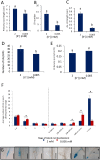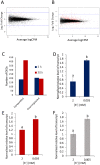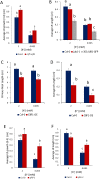Gibberellin signaling mediates lateral root inhibition in response to K+-deprivation
- PMID: 33793923
- PMCID: PMC8133588
- DOI: 10.1093/plphys/kiaa093
Gibberellin signaling mediates lateral root inhibition in response to K+-deprivation
Abstract
The potassium ion (K+) is vital for plant growth and development, and K+-deprivation leads to reduced crop yields. Here we describe phenotypic, transcriptomic, and mutant analyses to investigate the signaling mechanisms mediating root architectural changes in Arabidopsis (Arabidopsis thaliana) Columbia. We showed effects on root architecture are mediated through a reduction in cell division in the lateral root (LR) meristems, the rate of LR initiation is reduced but LR density is unaffected, and primary root growth is reduced only slightly. This was primarily regulated through gibberellic acid (GA) signaling, which leads to the accumulation of growth-inhibitory DELLA proteins. The short LR phenotype was rescued by exogenous application of GA but not of auxin or by the inhibition of ethylene signaling. RNA-seq analysis showed upregulation by K+-deprivation of the transcription factors JUNGBRUNNEN1 (JUB1) and the C-repeat-binding factor (CBF)/dehydration-responsive element-binding factor 1 regulon, which are known to regulate GA signaling and levels that regulate DELLAs. Transgenic overexpression of JUB1 and CBF1 enhanced responses to K+ stress. Attenuation of the reduced LR growth response occurred in mutants of the CBF1 target gene SFR6, implicating a role for JUB1, CBF1, and SFR6 in the regulation of LR growth in response to K+-deprivation via DELLAs. We propose this represents a mechanism to limit horizontal root growth in conditions where K+ is available deeper in the soil.
© The Author(s) 2021. Published by Oxford University Press on behalf of American Society of Plant Biologists.
Figures








Similar articles
-
The cold-inducible CBF1 factor-dependent signaling pathway modulates the accumulation of the growth-repressing DELLA proteins via its effect on gibberellin metabolism.Plant Cell. 2008 Aug;20(8):2117-29. doi: 10.1105/tpc.108.058941. Epub 2008 Aug 29. Plant Cell. 2008. PMID: 18757556 Free PMC article.
-
Regulation of the gibberellin pathway by auxin and DELLA proteins.Planta. 2010 Oct;232(5):1141-9. doi: 10.1007/s00425-010-1248-0. Epub 2010 Aug 13. Planta. 2010. PMID: 20706734
-
GA(3) enhances root responsiveness to exogenous IAA by modulating auxin transport and signalling in Arabidopsis.Plant Cell Rep. 2015 Mar;34(3):483-94. doi: 10.1007/s00299-014-1728-y. Epub 2014 Dec 25. Plant Cell Rep. 2015. PMID: 25540118
-
DELLA-interacting SWI3C core subunit of switch/sucrose nonfermenting chromatin remodeling complex modulates gibberellin responses and hormonal cross talk in Arabidopsis.Plant Physiol. 2013 Sep;163(1):305-17. doi: 10.1104/pp.113.223933. Epub 2013 Jul 26. Plant Physiol. 2013. PMID: 23893173 Free PMC article.
-
Auxin signaling modulates LATERAL ROOT PRIMORDIUM1 (LRP1) expression during lateral root development in Arabidopsis.Plant J. 2020 Jan;101(1):87-100. doi: 10.1111/tpj.14520. Epub 2019 Oct 16. Plant J. 2020. PMID: 31483536
Cited by
-
TORC pathway intersects with a calcium sensor kinase network to regulate potassium sensing in Arabidopsis.Proc Natl Acad Sci U S A. 2023 Nov 21;120(47):e2316011120. doi: 10.1073/pnas.2316011120. Epub 2023 Nov 15. Proc Natl Acad Sci U S A. 2023. PMID: 37967217 Free PMC article.
-
Friends in Arms: Flavonoids and the Auxin/Cytokinin Balance in Terrestrialization.Plants (Basel). 2023 Jan 23;12(3):517. doi: 10.3390/plants12030517. Plants (Basel). 2023. PMID: 36771601 Free PMC article. Review.
-
Ethylene response factor ERF022 is involved in regulating Arabidopsis root growth.Plant Mol Biol. 2023 Oct;113(1-3):1-17. doi: 10.1007/s11103-023-01373-1. Epub 2023 Aug 8. Plant Mol Biol. 2023. PMID: 37553544
-
Combined morpho-physiological, ionomic and transcriptomic analyses reveal adaptive responses of allohexaploid wheat (Triticum aestivum L.) to iron deficiency.BMC Plant Biol. 2022 May 10;22(1):234. doi: 10.1186/s12870-022-03627-4. BMC Plant Biol. 2022. PMID: 35534803 Free PMC article.
-
Effect of Potassium Deficiency on Physiological Responses and Anatomical Structure of Basil, Ocimum basilicum L.Biology (Basel). 2022 Oct 24;11(11):1557. doi: 10.3390/biology11111557. Biology (Basel). 2022. PMID: 36358259 Free PMC article.
References
-
- Achard P, Cheng H, De Grauwe L, Decat J, Schoutteten H, Moritz T, Van Der Straeten D, Peng J, Harberd NP (2006) Integration of plant responses to environmentally activated phytohormonal signals. Science 311:91–94 - PubMed
-
- Achard P, Genschik P (2009) Releasing the brakes of plant growth: how GAs shutdown Della proteins. J Exp Bot 60:1085–1092 - PubMed
-
- Achard P, Renou JP, Berthomé R, Harberd NP, Genschik P (2008b) Plant DELLAs restrain growth and promote survival of adversity by reducing the levels of reactive oxygen species. Curr Biol 18:656–660 - PubMed
-
- Adams F (1971) Soil solution. InCarson EW, ed, The Plant Root and its Environment. Charlottesville, VA, University Press of Virginia, pp 441–481
Publication types
MeSH terms
Substances
Grants and funding
LinkOut - more resources
Full Text Sources
Other Literature Sources
Molecular Biology Databases

